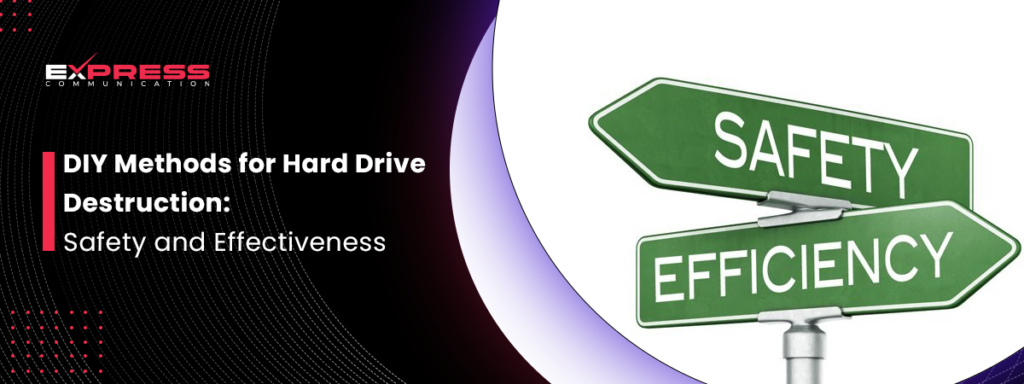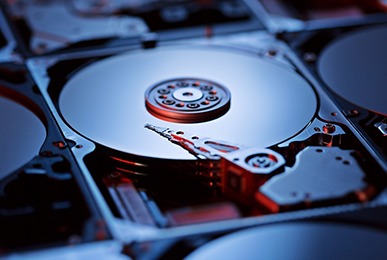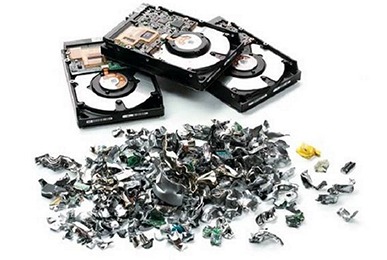
Have you ever wondered what happens to your old computer or laptop when you no longer need it? More importantly, what happens to all the sensitive data stored on its hard drive? Whether it’s personal photos, financial information, or work documents, it’s crucial to ensure that this data doesn’t fall into the wrong hands. This is where data sanitization comes in, and one effective way to ensure your data is truly gone is by destroying the hard drive. But how can you do this yourself at home? Let’s explore some DIY methods for hard drive destruction that are both safe and effective.
Table of Contents
Why Hard Drive Destruction is Important?
When you delete files from your computer, they don’t actually disappear completely. Instead, the files are moved to the recycle bin, and even after emptying the recycle bin, the data can still be recovered using special software. This is why simply deleting your files is not enough. To protect your privacy and sensitive information, you need to ensure that the data is completely unrecoverable. This process is known as data sanitization.
DIY Methods for Hard Drive Destruction
There are several methods you can use to destroy a hard drive at home. Each method varies in its level of effectiveness and safety. Here, we will discuss some of the most common DIY methods and evaluate their pros and cons.
1. Data Wiping Software
One of the simplest methods to ensure your data is irretrievable is by using data-wiping software. These programs overwrite your hard drive multiple times with random data, making it nearly impossible to recover the original files.
Pros:
- Easy to use.
- Doesn’t physically damage the hard drive, so you can recycle or reuse it.
Cons:
- It can be time-consuming, especially for large drives.
- It may not be effective against advanced recovery techniques.
Some popular data wiping software includes DBAN (Darik’s Boot and Nuke), CCleaner, and Eraser. These programs are generally user-friendly and provide a high level of data sanitization.
2. Degaussing
Degaussing is a process that uses a powerful magnet to disrupt the magnetic fields on the hard drive, effectively destroying the data stored on it.
Pros:
- Very effective at making data unrecoverable.
- Quick process.
Cons:
- Requires special equipment, which can be expensive.
- Can be dangerous if not handled properly, as strong magnets can cause injury.
While degaussing is a professional method, DIY enthusiasts can sometimes find degaussing wands or other tools online. However, it’s crucial to follow all safety instructions to avoid accidents.
3. Drilling Holes
Physically drilling holes into the hard drive is a popular DIY method. By puncturing the platters inside, you make it much more difficult to recover any data.
Pros:
- Simple and cost-effective.
- Physically destroys the drive, making data recovery very challenging.
Cons:
- Requires a drill and safety equipment.
- Risk of injury from flying debris or improper use of tools.
To safely drill holes into your hard drive, secure it on a stable surface and use protective eyewear and gloves. Drill multiple holes through the platters to ensure maximum destruction.
4. Hammering
If you don’t have a drill, you can use a hammer to physically destroy the hard drive. Smashing the hard drive with a hammer can shatter the platters, making data recovery almost impossible.
Pros:
- No special equipment needed, just a hammer.
- Effective at destroying the drive.
Cons:
- Can be dangerous without proper safety precautions.
- Messy and noisy.
When using a hammer, make sure to wear protective gear and work in a safe area where debris won’t cause harm. Place the hard drive on a solid surface and hit it repeatedly until the platters are broken.
5. Incineration
Burning the hard drive is another method of destruction. Extreme heat can melt and warp the platters, ensuring that the data is destroyed.
Pros:
- Highly effective at destroying data.
- Permanent.
Cons:
- Very dangerous and not recommended without proper facilities.
- Environmental concerns from toxic fumes.
Incineration should only be considered if you have access to a proper incinerator and understand the safety and environmental regulations involved.
Safety First
While these DIY methods can be effective, safety should always be your top priority. Always wear protective gear, such as gloves and safety glasses, when handling tools. Work in a well-ventilated area, especially when using methods like incineration. If you’re not comfortable performing these tasks, consider hiring a professional data destruction service.
Professional Data Destruction Services
If the DIY methods seem too risky or cumbersome, professional data destruction services are available. These services use industrial-grade equipment and follow strict protocols to ensure that your data is completely destroyed. They often provide a certificate of destruction, giving you peace of mind that your data is secure.
Conclusion
Ensuring the security of your data is crucial, and DIY hard drive destruction methods can be an effective way to achieve this. Whether you choose to use data wiping software, degaussing, drilling, hammering, or incineration, each method has its own advantages and risks. Always prioritize safety, and if in doubt, consult a professional service. By taking the necessary steps to destroy your hard drive, you can protect your personal and sensitive information from falling into the wrong hands.





